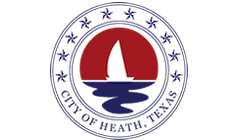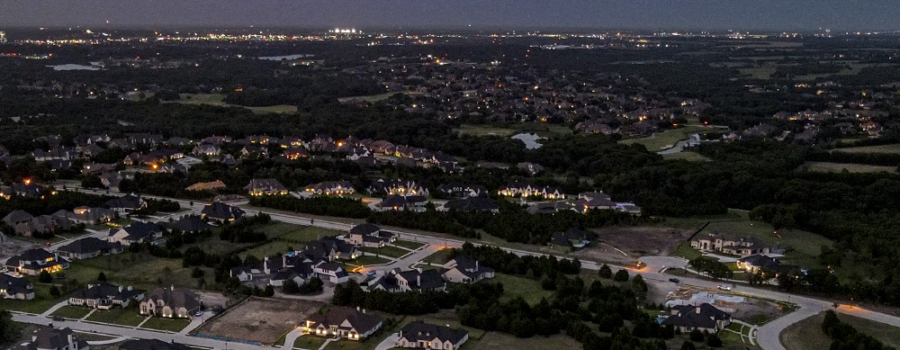City Council Adopts Outdoor Lighting/Dark Sky Ordinance for Non-Residential Properties
The Heath City Council adopted an Outdoor Lighting/Dark Sky Ordinance at its July 14 meeting. You can view the ordinance draft here (pdf).
What is the Purpose of an Outdoor Lighting/Dark Sky Ordinance?
The intent of the ordinance is to decrease light pollution to maintain Heath’s quaint rural character, maintain property safety, preserve views of the night sky, and promote energy efficiency, community health, and harmony between neighbors.
What Properties are Affected by the Ordinance?
The ordinance regulates all non-residential properties within the city limits of Heath. Single-family homes are not affected. Examples of non-residential properties regulated include:
- Parks
- Neighborhood common areas
- Neighborhood amenity centers
- Sports facilities
- Trails
- Streets
- Neighborhood entry features
- Non-residential uses situated in the take-area of Lake Ray Hubbard.
- Parking areas
- Agricultural uses such as barns and arenas
- Tri-plexes, four-plexes and apartments
What are the Requirements of the Ordinance?
This ordinance requires that outdoor light fixtures be shielded so that the light shines downward — not upward or directly sideways. The new regulations also control light from scattering upward into the sky and minimize the horizontal glare that occurs with looking directly at a light bulb.
A goal of the ordinance is to provide light that is closest to the natural light seen from the sun and stars. This light required is in the yellow color spectrum, which minimizes the use of light in the blue color spectrum.
Great effort was made to write an ordinance that is easy to interpret, easy to administer, and easy to enforce.
How Will the Ordinance be Enforced?
Under the new ordinance, the developer of non-residential development is required to provide an outdoor lighting plan that meets the requirements of the ordinance.
This plan will be reviewed by City staff to ensure that requirements are met. After the lighting is in place and inspected by the building department, a code enforcement officer will investigate any complaints after dark.
Does Ordinance affect Existing Non-Residential Properties?
Yes, existing non-residential properties are required to comply with the ordinance. Owners/developers of existing non-residential properties have up to five years from the date of adoption to comply with the ordinance. If non-residential property owners/developers modify their property after the adoption of the ordinance, compliance may be required at the time the property is modified. City staff are available to answer any questions to assist owners/developers regarding plans for compliance.
Please contact: Aaron Adel, Director of Planning, aadel@heathtx.com (972)961-4875
Summary of Ordinance Measurables:
- Compliance for streetlights and nonconforming fixtures required by July 14, 2027, 5 years from adoption of the new ordinance
- 3000 or lower Kelvin lamps with a minimum Color Rendering Index (CRI) of 80
- Any fixture with a total light emission of 1,500 lumens shall be fully shielded
- Aggregate outdoor lighting of 65,000 lumens per net acre (approx. 1.5 footcandles per SF) for parking, pedestrian ways, and fire lanes
- 1.5 FC maximum average illumination of parking, pedestrian ways, and fire lanes (FC = footcandles)
- 5 FC maximum illumination at any point
- 10 FC maximum illumination under canopies
- Maximum illumination on neighboring properties based on zoning and public use of the neighboring property:
0.1 FC : Single-Family Residential Districts
0.5 FC : Multiple-Family Residential District
0.1 FC : Agricultural District
1.5 FC : Nonresidential District
0.1 FC : Lake Edge Zoning District
0.5 FC : Public Areas, including right-of-way - 20’ maximum height of light poles, standards, and flagpoles
- 10:oo pm t0 one hour before sunrise light curfew
Section 98.16 of the new ordinance provides relief by means of a Variance.

 2022 City of Heath
2022 City of Heath